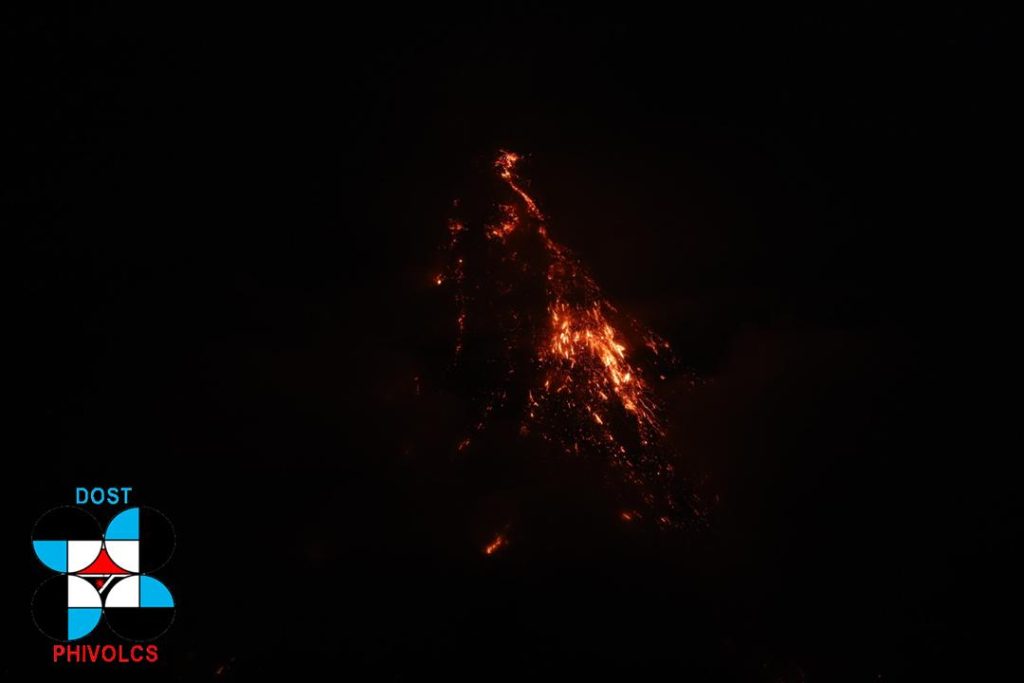
By Gabriela Baron
Lava flow from Mayon Volcano reached 1.5 kilometers (km) in the past 24 hours, the Philippine Institute of Volcanology and Seismology (Phivolcs) reported Saturday, June 17.
Phivolcs also observed lava collapse on the Mi-isi and Bonga Gullies, 3.3km from the Mayon Volcano crater.
A total of 280 rockfall events and two volcanic earthquakes were also recorded.
Meanwhile, sulfur dioxide emissions averaged at 978 per day on June 16.
About 100-meter tall plumes were also seen.
Phivolcs warned the public against rock falls, landslides, avalanches, ballistic fragments, lava flows and fountaining, pyroclastic density currents, moderate-sized explosions, and lahars during heavy rainfall.
Entry into the 6-km radius permanent danger zone and flying any aircraft close to the volcano are also prohibited.
Over 10,000 families affected
More than 10,000 families have been affected by the Mayon Volcano activities, based on the latest situational report of the National Disaster Risk Reduction and Management Council (NDRRMC).
NDRRMC reported that 10,123 families or 38,978 persons were currently staying in 27 evacuation centers.
There were also 1,053 persons staying outside evacuation centers.
Classes and work were suspended in six cities and municipalities in the Bicol Region, while a total of 18 cities and municipalities were put under state of calamity.
About P57.6 million worth of assistance were also provided to the Bicol Region.
Mayon Volcano remains under Alert Level 3 which means that it is currently in a relatively high level of unrest.
